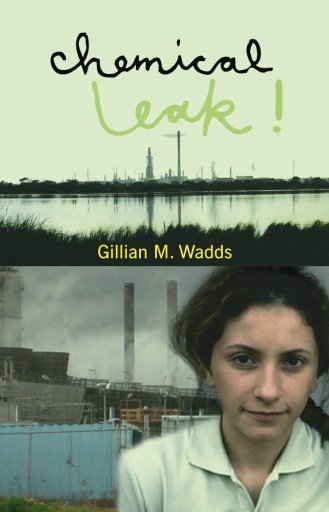Chemical Leak Teachers’ Notes
Although intended primarily as a “good read” for students, there are a number of different ways in which Chemical Leak! can be used in the classroom.
The following suggestions are based on subjects the students have read about in the novel and activities, investigations and discussions can be as formal or informal as the teacher desires.

a.practical.exercise
Mapping and observation.
For her project, Zena marks on a map the path of the chemical from the factory fence to the creek. She also labels other important details as well.
Download a map of your local area from whereis.com or photocopy a page from a street directory. Country students may be able to use tourist maps from their local Shire Office or Information Centre.
Mark the route you travel:
- to school
- to a sports ground
- to a relative’s house
- or other.
Label various landmarks you see on the way: e.g.
- a shopping centre
- a house with a barking dog
- a park
- a railway station
- traffic lights
- a friend’s house, etc.
.where.do.you.come.from?
Family backgrounds
Chemical Leak! was first launched at the Altona Library and five students from the Altona North Campus of Bayside Secondary College performed a dramatised excerpt.
| They were: | Narrator : | Carole | Born in Australia, Vietnamese parents. |
| Zena : | Sandra | Born in Australia, Lebanese parents. | |
| Josef : | Nikeel | Born in Australia, Indian parents. | |
| Dad : | Matt | Born in Australia, Spanish/English background. | |
| Mum : | Emily | Born in Australia, English/Scottish background. |
The discussion which followed revealed many more national backgrounds from the students and adults in the audience: Greek, Syrian, Egyptian, Maltese, Finnish, Dutch, Irish and many, many more.
A Classroom Activity or Student Assignment:
- How many different backgrounds are present in your class?
- How many generations have lived in Australia?
- Mark countries of origin on a map of the world.
- Research with parents, grandparents and other relatives to discover your history. (When your family first arrived in Australia, why they migrated, etc.)
- Find out something about the country (or countries) your family originally came from.
.ethics
To report or not to report?
From Page 113 to Page 116 there is a scene in which Zena’s father tells her he doesn’t want to report the leaking chemical because he might lose his job. This is the scene that was performed by students at the launch. (Dramatised version is available by clicking here.)
A Classroom Discussion or Student Report:
- How much responsibility do we have to care for the environment?
- Why does Dad say: “People are more suspicious. Of us.” ?
- Who can we report to?
- Why are factories necessary?
- Can they be made to operate safely? How?
- In Australia, the Environment Protection Authority (EPA) keeps watch over problems like the one Zena found. Students can learn about what the EPA does by visiting theirVictorian, New South Wales, or Queensland websites.
.writing.exercise
Do you know any “characters”?
Zena describes Miss Kouros as looking “a bit like a gipsy”. She says the top of her head ends up looking “like a giant pincushion”.
She says Ms Davis reminds her of a pelican.
Make up a character which has some crazy, weird, or unusual characteristics. Describe this character so that if anyone met them, they would recognise them immediately.